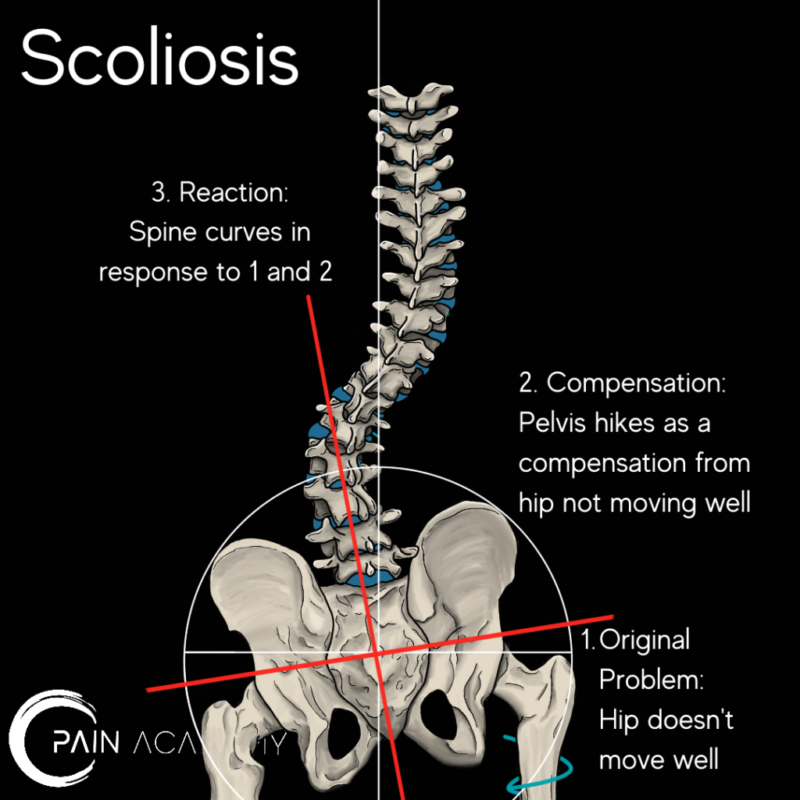Scoliosis is a condition characterized by an abnormal curvature of the spine, which can lead to various complications and health issues. One such complication is the development of herniated discs. In this article, we will explore the relationship between scoliosis and herniated discs, understanding the underlying mechanisms, symptoms, diagnosis, and treatment options for this condition.

Understanding Scoliosis
Scoliosis is a condition that affects the alignment of the spine, causing it to curve sideways. It can occur in people of all ages, but it is most commonly diagnosed during adolescence. The exact cause of scoliosis is often unknown, but it can be influenced by factors such as genetics, muscle imbalances, and neuromuscular conditions.
What is a Herniated Disc?
A herniated disc, also known as a slipped or ruptured disc, occurs when the soft inner core of a spinal disc protrudes through the outer layer. This can cause compression of nearby nerves, leading to pain, numbness, and weakness in the affected area. Herniated discs commonly occur in the lower back (lumbar spine) or the neck (cervical spine).

The Link Between Scoliosis and Herniated Discs
Scoliosis can contribute to the development of herniated discs due to several factors. One of the main reasons is the misalignment of the spine caused by scoliosis. When the spine curves abnormally, it can put uneven pressure on the discs, leading to their degeneration and increased vulnerability to herniation.
Spinal Misalignment and Disc Degeneration
The abnormal curvature of the spine in scoliosis can lead to spinal misalignment. This misalignment can cause excessive stress on the discs, leading to their degeneration over time. As the discs degenerate, they become weaker and more prone to herniation.
Increased Pressure on Discs in Scoliotic Spines
In scoliotic spines, the abnormal curvature can cause certain areas of the spine to bear more weight and pressure than others. This uneven distribution of pressure can lead to increased stress on the discs, making them more susceptible to herniation.
Impact of Scoliosis on Disc Health
Scoliosis can have a significant impact on the health of the discs. The abnormal curvature of the spine can disrupt the normal movement and function of the discs, leading to their degeneration. Additionally, the misalignment of the spine can cause the discs to become compressed, reducing their ability to absorb shock and distribute forces evenly.
Symptoms and Diagnosis of Herniated Discs
The symptoms of a herniated disc can vary depending on the location and severity of the herniation. Common symptoms include localized pain, radiating pain, numbness, tingling, and muscle weakness. Diagnosis of a herniated disc typically involves a physical examination, medical history review, and imaging tests such as X-rays, MRI, or CT scans.
Treatment Options for Scoliosis-Related Herniated Discs
The treatment of scoliosis-related herniated discs aims to alleviate pain, reduce inflammation, and improve the overall function of the spine. The treatment options can vary depending on the severity of the condition and the individual’s specific needs.
Physical Therapy and Exercise for Scoliosis and Herniated Discs
Physical therapy and exercise play a crucial role in the management of scoliosis-related herniated discs. Physical therapists can design specific exercise programs to strengthen the muscles supporting the spine, improve flexibility, and correct postural imbalances. These exercises can help alleviate pain, improve spinal stability, and prevent further degeneration of the discs.

Surgical Interventions for Scoliosis and Herniated Discs
In severe cases of scoliosis-related herniated discs, surgical intervention may be necessary. Surgery aims to correct the spinal curvature, decompress the affected discs, and stabilize the spine. Surgical options include spinal fusion, disc replacement, and minimally invasive procedures. However, surgery is typically considered a last resort when conservative treatments have failed to provide relief.
Conclusion and Future Research
Scoliosis can contribute to the development of herniated discs due to the misalignment and increased pressure on the spinal discs. Understanding the link between these conditions is crucial for early detection, accurate diagnosis, and appropriate treatment. Further research is needed to explore the specific mechanisms underlying the relationship between scoliosis and herniated discs, as well as to develop more effective treatment strategies.
In conclusion, scoliosis can have a significant impact on the health of the spinal discs, increasing the risk of herniation. It is important for individuals with scoliosis to be aware of this potential complication and seek appropriate medical attention if they experience symptoms of a herniated disc. With proper diagnosis and treatment, individuals with scoliosis-related herniated discs can find relief and improve their overall spinal health.
References
- Weinstein SL, Dolan LA, Cheng JC, et al. “Adolescent idiopathic scoliosis.” Lancet. 2008;371(9623):1527-1537. doi: 10.1016/S0140-6736(08)60658-3.
- Negrini S, Donzelli S, Aulisa AG, et al. “2016 SOSORT guidelines: Orthopaedic and rehabilitation treatment of idiopathic scoliosis during growth.” Scoliosis and Spinal Disorders. 2018;13:3. doi: 10.1186/s13013-018-0175-8.
- Trobisch P, Suess O, Schwab F. “Idiopathic scoliosis.” Dtsch Arztebl Int. 2010;107(49):875-883. doi: 10.3238/arztebl.2010.0875.
- Hresko MT. “Clinical practice. Idiopathic scoliosis in adolescents.” N Engl J Med. 2013;368(9):834-841. doi: 10.1056/NEJMcp1209063.
- Bettany-Saltikov J, Weiss HR, Chockalingam N, et al. “Surgical versus non-surgical interventions in people with adolescent idiopathic scoliosis.” Cochrane Database Syst Rev. 2015;2015(4). doi: 10.1002/14651858.CD010663.pub2.
- Social Security Administration. “Disability Benefits.” https://www.ssa.gov/benefits/disability/.
- Lonstein JE, Carlson JM. “The prediction of curve progression in untreated idiopathic scoliosis during growth.” J Bone Joint Surg Am. 1984;66(7):1061-1071. doi: 10.2106/00004623-198466070-00008.
- Kaspiris A, Grivas TB, Weiss HR, Turnbull D. “Scoliosis: Review of diagnosis and treatment.” International Journal of Orthopaedics. 2013;37(1):34-42. doi: 10.1038/s41390-020-1047-9.
- Monticone M, Ambrosini E, Cazzaniga D, Rocca B, Ferrante S. “The efficacy of a new functional brace for the treatment of adolescent idiopathic scoliosis: A retrospective comparative study.” Scoliosis. 2014;9:7. doi: 10.1186/1748-7161-9-7.
- Weinstein SL. “Scoliosis and other spinal deformities.” In: Orthopaedic Knowledge Update: Spine 5. American Academy of Orthopaedic Surgeons; 2014. p. 375-387. https://www.aaos.org.
- Richards BS, O’Brien MF, D’Andrea LP, et al. “Bracing in adolescents with idiopathic scoliosis: A meta-analysis.” J Bone Joint Surg Am. 2013;95(11):564-572. doi: 10.2106/JBJS.L.00789.
